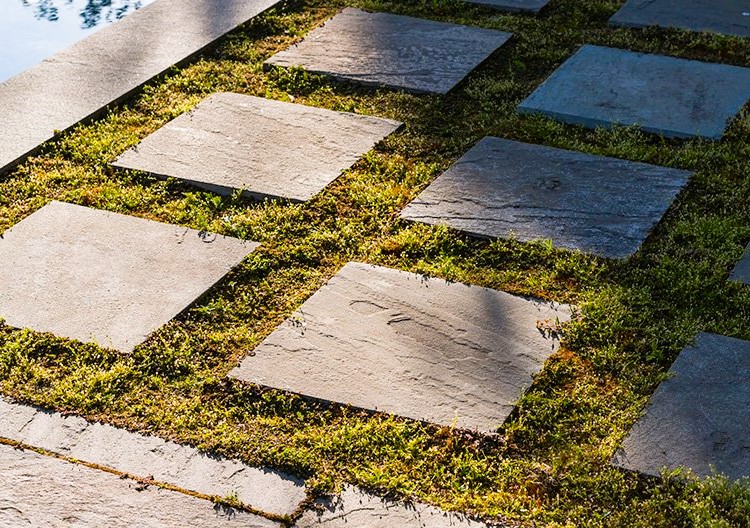
Pathways are essential features of any outdoor space, providing functional access and contributing to the overall aesthetics of your property. However, in the diverse and often harsh climate of Canada, pathways can take a beating and may require periodic repairs. Choosing the right materials for pathway repair is crucial to ensure durability and longevity. In this article, we’ll explore the factors to consider when selecting materials for repairing or upgrading pathways in the Canadian climate.
1. Climate Considerations
Canada’s climate varies significantly from region to region, with some areas experiencing extreme cold in winter and others enduring hot summers. It’s essential to consider your specific climate when choosing pathway materials:
- Freeze-Thaw Cycles: In regions with cold winters, pathways are exposed to freeze-thaw cycles. Materials must withstand the expansion and contraction that occurs as moisture freezes and thaws.
- Heat and UV Exposure: In warmer regions, materials should be resistant to heat and UV radiation, which can cause fading and degradation.
- Rain and Moisture: Areas with high rainfall or moisture levels require materials that don’t absorb water and are resistant to mold and mildew.
2. Pavers
Pavers are a popular choice for pathways due to their versatility and durability. They come in various materials, including concrete, clay, and natural stone. Here’s how each type of paver performs in the Canadian climate:
- Concrete Pavers: Concrete pavers are a cost-effective option and are available in various colors and shapes. They can withstand freeze-thaw cycles but may require sealing to enhance durability.
- Clay Pavers: Clay pavers offer a classic look and are durable in colder climates. They are less prone to fading and are resistant to UV radiation.
- Natural Stone Pavers: Natural stone pavers, such as granite or bluestone, provide a timeless and elegant appearance. They are durable and can handle extreme weather conditions.
3. Gravel
Gravel pathways are easy to install and provide excellent drainage, making them suitable for regions with high moisture levels. However, they may require occasional replenishing and maintenance to prevent sinking and erosion.
4. Asphalt

Asphalt is a durable and cost-effective choice for pathways. It is commonly used in driveways but can also be used for walkways. Asphalt can handle extreme temperature fluctuations, but proper installation is essential to prevent cracking.
5. Concrete
Concrete pathways are a versatile option that can withstand the Canadian climate with proper installation and maintenance. They can be stamped or stained to mimic the appearance of natural stone or brick.
6. Composite Materials
Composite materials, such as composite decking or recycled plastic lumber, are eco-friendly options. They are resistant to moisture, UV radiation, and insects, making them suitable for various climates.
7. Natural Stone
Natural stone, such as flagstone or slate, provides a rustic and natural look. These materials are durable and can withstand temperature changes but may require occasional re-leveling.
8. Wood
Wooden pathways can be visually appealing and are suitable for specific landscape designs. However, in Canadian climates, wood may require regular maintenance to prevent rot and warping. Cedar and redwood are naturally rot-resistant wood choices. Read also about innovative technologies in yard maintenance; we looked at automation and smart care.
9. Rubber
Rubber pathway materials are slip-resistant and comfortable to walk on. They are suitable for regions with high moisture levels but may not be as common in colder climates.
10. Consider Local Availability
It’s essential to consider the availability of materials in your local area. Choosing materials that are readily accessible can save on transportation costs and support local businesses.

11. Maintenance
No matter which material you choose, proper maintenance is essential to extend the life of your pathways. Regular cleaning, sealing, and repairs as needed will help prevent deterioration over time.
12. Accessibility
For pathways in public or commercial spaces, it’s crucial to consider accessibility standards to ensure that everyone, including individuals with disabilities, can navigate the pathways safely.
In conclusion, choosing the right materials for pathway repair in the Canadian climate involves careful consideration of climate conditions, durability, aesthetics, and maintenance requirements. By selecting materials that can withstand the challenges posed by Canada’s diverse climate, you can ensure that your pathways remain functional and visually appealing for years to come.
For more information on pathway materials and maintenance, you can visit on the official Government of Canada website. These sources can provide additional insights and guidelines for selecting the most suitable pathway materials for your specific location.



